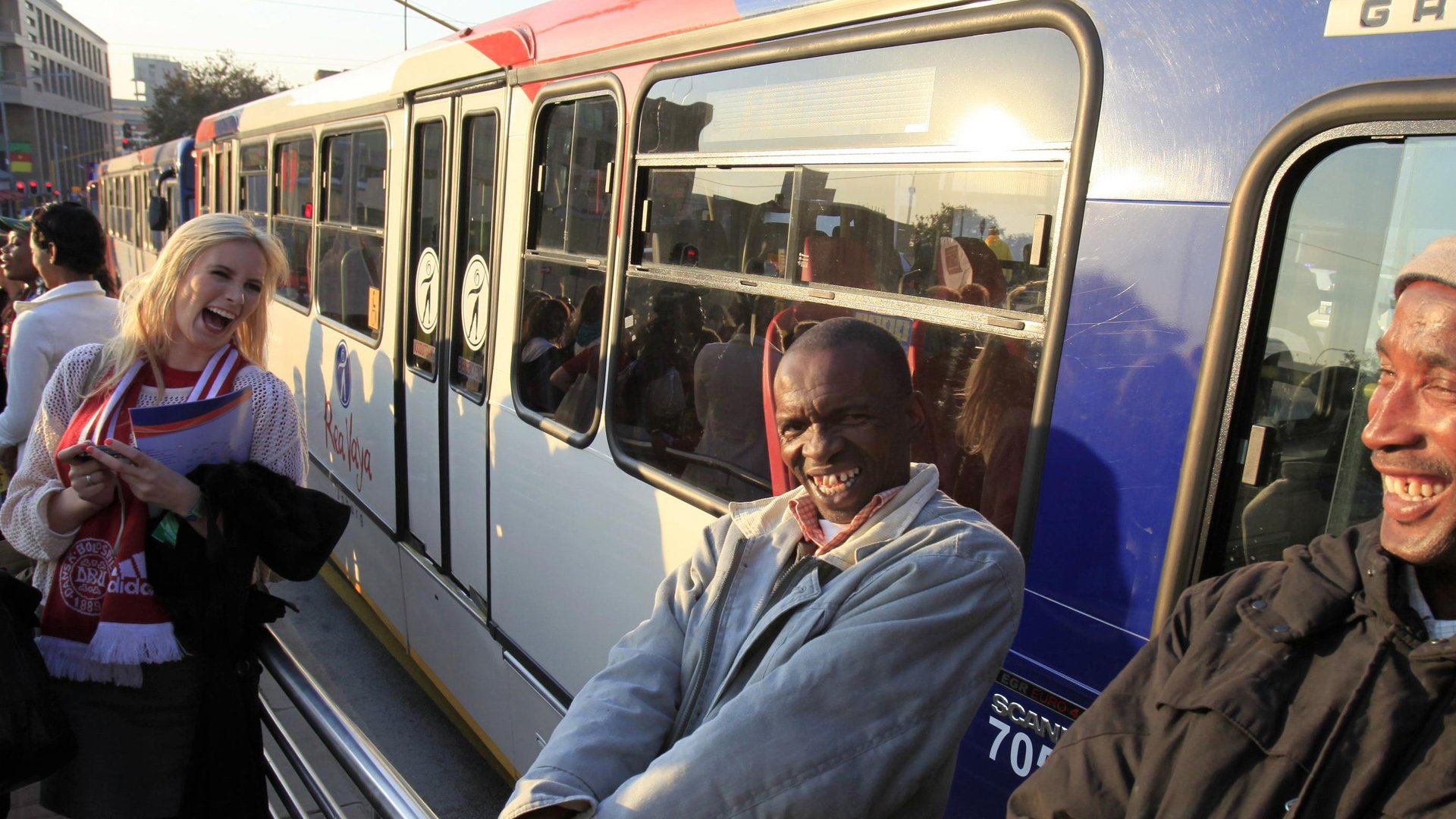How a public bus system in Johannesburg saved South Africa $890 million
Johannesburg’s bus rapid transit system Rea Vaya—one of the continent’s first public bus systems—has saved South Africa as much as $890 million so far, by reducing travel time, improving road safety, and cutting down on carbon emissions, according to a recent report by the New Climate Economy, a project affiliated with the World Resources Institute.


Johannesburg’s bus rapid transit system Rea Vaya—one of the continent’s first public bus systems—has saved South Africa as much as $890 million so far, by reducing travel time, improving road safety, and cutting down on carbon emissions, according to a recent report by the New Climate Economy, a project affiliated with the World Resources Institute.
Efficient transport projects like Rea Vaya, which means “We are going” in South African township slang, Scamto, could save the world’s urban cities as much as $17 trillion between now and 2050 as well as reduce greenhouse gas emissions by 3.7 giga-tonnes of CO2 equivalent a year by 2030, according to the study. That is more than India’s total greenhouse gas emissions a year.
The study recommends investment in energy-saving buildings, better public transit systems, and waste management and criticizes the idea that countries must sacrifice economic growth to cut back on emissions. ”There is now increasing evidence that emissions can decrease while economies continue to grow,” said Seth Schultz, a researcher for the C40 Cities Climate Leadership Group, told the Guardian.
These savings matter especially in sub-Saharan Africa where countries are urbanizing faster than any other region in the world. By 2050, as much as two-thirds of the world’s population will be living in urban areas. Of those, 800 million people in Africa will be living in cities.
The Rea Vaya bus system, built in 2009, runs on low sulphur diesel and follows predetermined routes in their own lanes, cutting down on the time spent cruising along the congested streets of Johannesburg. Here are those savings, as calculated by the World Resources Institute:
The project is also a good example of how cities can overcome local opposition. Like many major African cities, residents in Johannesburg traveled by overloaded, poorly maintained minibus taxis run by small companies that controlled 75% of transportation in the city. City officials say that if 15% of car owners that live near Johannesburg used the bus instead of driving, emissions could be reduced by 1.6 million tons by 2020. While there is still resistance among rival mini-bus taxi operators, planners involved mini bus operators at the early stages, and many of them went on to become drivers and shareholders in the new transport system. Government subsidies have kept bus fares low, less than a dollar for a single trip. (These subsidies are not figured into how much South Africa has saved from the new bus system).
Cape Town’s MyCiti bus rapid transit system is another example of a government subsidized bus transit system. Five years after it was launched—prior to the 2010 Fifa World Cup which was held in South Africa—MyCiti has transported over 31.1 million passengers, covering 1.27 million kilometers (over 789,000 miles) each month and with nearly 48,000 passengers using the service daily. The success of both public transit projects relies on affordable fares for low-income users, and increased frequency of busses on multiple routes to decrease commute times.